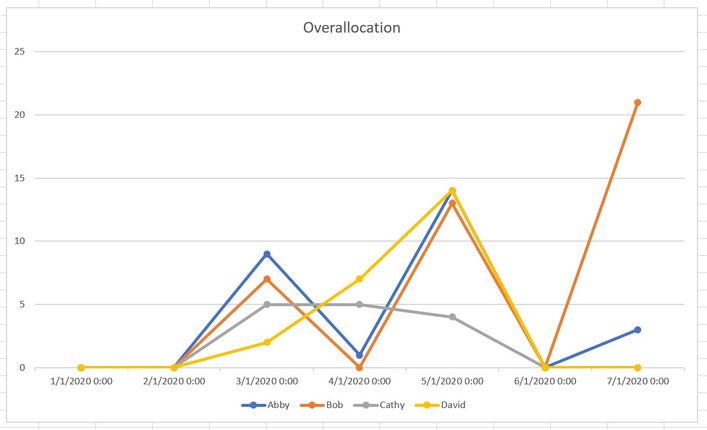FabCon is coming to Atlanta
Join us at FabCon Atlanta from March 16 - 20, 2026, for the ultimate Fabric, Power BI, AI and SQL community-led event. Save $200 with code FABCOMM.
Register now!- Power BI forums
- Get Help with Power BI
- Desktop
- Service
- Report Server
- Power Query
- Mobile Apps
- Developer
- DAX Commands and Tips
- Custom Visuals Development Discussion
- Health and Life Sciences
- Power BI Spanish forums
- Translated Spanish Desktop
- Training and Consulting
- Instructor Led Training
- Dashboard in a Day for Women, by Women
- Galleries
- Data Stories Gallery
- Themes Gallery
- Contests Gallery
- QuickViz Gallery
- Quick Measures Gallery
- Visual Calculations Gallery
- Notebook Gallery
- Translytical Task Flow Gallery
- TMDL Gallery
- R Script Showcase
- Webinars and Video Gallery
- Ideas
- Custom Visuals Ideas (read-only)
- Issues
- Issues
- Events
- Upcoming Events
View all the Fabric Data Days sessions on demand. View schedule
- Power BI forums
- Forums
- Get Help with Power BI
- Developer
- Charting overallocation of resources against time
- Subscribe to RSS Feed
- Mark Topic as New
- Mark Topic as Read
- Float this Topic for Current User
- Bookmark
- Subscribe
- Printer Friendly Page
- Mark as New
- Bookmark
- Subscribe
- Mute
- Subscribe to RSS Feed
- Permalink
- Report Inappropriate Content
Charting overallocation of resources against time
Hi, I'm trying to create a line chart of resource overallocation against time like below:
However, I would also like for the user viewing the report to be able to choose which resources are displayed in the chart.
I have 2 data sources.
The first is a table of assignment work against time. Resources can have multiple assignments on the same day.
The second table is of resource capacity over time.
My current idea involves the following:
1. Group data in Assignment table by day/resource to get each resource's work by day.
2. Merging the queries (tables 1 and 2) using a custom ID column (concat of TimeByDay and ResourceName).
3. Subtracting Capacity from WorkByDay to get Overallocation.
4. Pivoting ResourceName column to give the following table:
5. Adding the individual fields (resource) to the line chart.
My questions are:
- I would like for the user to be able to select which resources are shown on the chart (e.g. via a slicer). As each resource is currently an individual field, is this possible?
- Additionally, I have a table of detailed resource information (e.g. resource name, ID, department, etc). Is there a way to directly map the overallocation table to the resource information table (i.e. mapping rows to fields) or transform the resource information table then map fields such that the resources displayed in chart can be filtered by department?
- Is there a more efficient/better method of achieving this?
Thank you in advance for any advice!
Solved! Go to Solution.
- Mark as New
- Bookmark
- Subscribe
- Mute
- Subscribe to RSS Feed
- Permalink
- Report Inappropriate Content
HI @liyanc,
#1, For your scenario, I do not so recommend you to change your table structure, new structure not suitable for your requirement.
In my opinion, I'd like to suggest adding a calculated column to concatenate 'date' and 'resource name' fields to these tables. Then you can create a calculated table with merged concatenate fields as a bridge to link two tables.
Calculated column:
Resource Date =
Table[TimeByDay] & "-" & Table[ResourceName]Calculated table:
Bridge =
ADDCOLUMNS (
DISTINCT (
UNION ( VALUES ( Table1[Resource Date] ), VALUES ( Table2[Resource Date] ) )
),
"TimeByDay", PATHITEM ( SUBSTITUTE ( [Resource Date], "-", "|" ), 1 ),
"ResourceName", PATHITEM ( SUBSTITUTE ( [Resource Date], "-", "|" ), 2 )
)
After these steps, you can simply use bridge table fields to analytic records between two tables.
Relationship in Power BI with Multiple Columns
#2, You can link the detailed information table with the bridge table 'ResourceName' field.
Regards,
Xiaoxin Sheng
- Mark as New
- Bookmark
- Subscribe
- Mute
- Subscribe to RSS Feed
- Permalink
- Report Inappropriate Content
HI @liyanc,
#1, For your scenario, I do not so recommend you to change your table structure, new structure not suitable for your requirement.
In my opinion, I'd like to suggest adding a calculated column to concatenate 'date' and 'resource name' fields to these tables. Then you can create a calculated table with merged concatenate fields as a bridge to link two tables.
Calculated column:
Resource Date =
Table[TimeByDay] & "-" & Table[ResourceName]Calculated table:
Bridge =
ADDCOLUMNS (
DISTINCT (
UNION ( VALUES ( Table1[Resource Date] ), VALUES ( Table2[Resource Date] ) )
),
"TimeByDay", PATHITEM ( SUBSTITUTE ( [Resource Date], "-", "|" ), 1 ),
"ResourceName", PATHITEM ( SUBSTITUTE ( [Resource Date], "-", "|" ), 2 )
)
After these steps, you can simply use bridge table fields to analytic records between two tables.
Relationship in Power BI with Multiple Columns
#2, You can link the detailed information table with the bridge table 'ResourceName' field.
Regards,
Xiaoxin Sheng
Helpful resources

Power BI Monthly Update - November 2025
Check out the November 2025 Power BI update to learn about new features.

Fabric Data Days
Advance your Data & AI career with 50 days of live learning, contests, hands-on challenges, study groups & certifications and more!

| User | Count |
|---|---|
| 4 | |
| 2 | |
| 2 | |
| 1 | |
| 1 |





